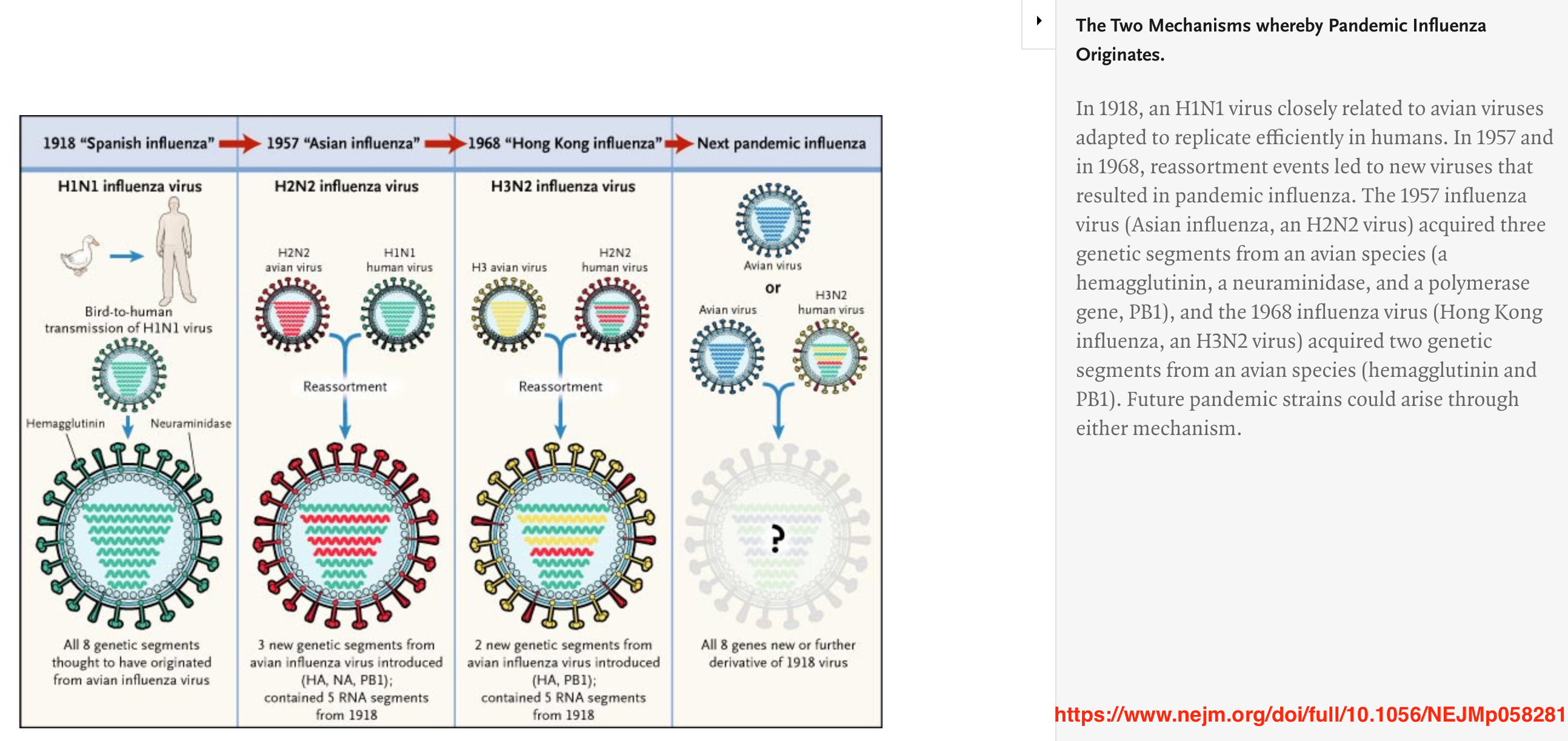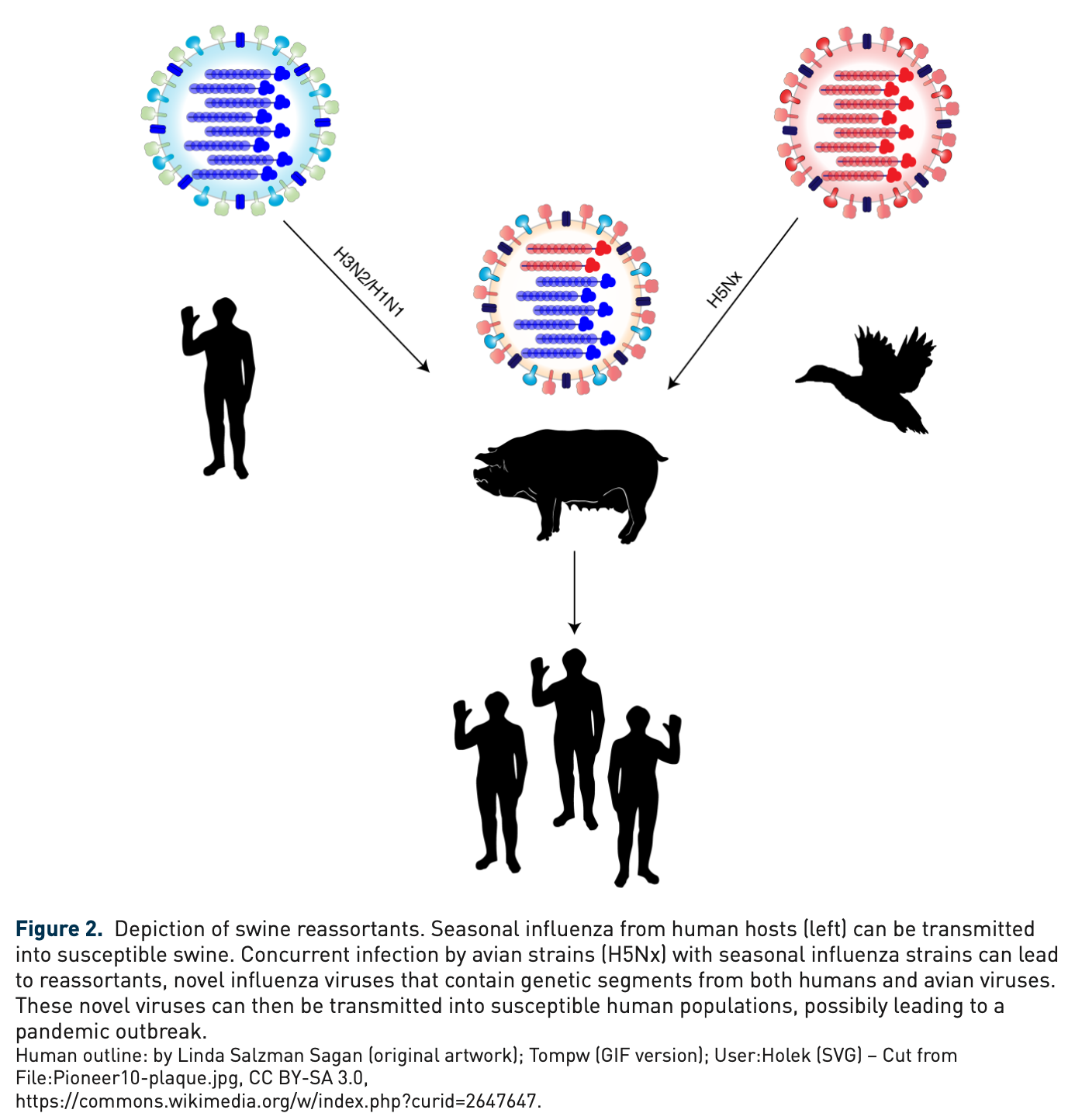Reports of an H5N8 influenza virus spreading among birds across the globe understandably have generated concern. However, H5 viruses do not pose a direct threat to the health of the vast majority of humans on the planet, at least not yet.
One of the risks of being alive is getting infected with a nasty microorganism. The coronavirus pandemic has proven that, despite the triumph of biomedical science over many common ailments, some diseases are nearly impossible to stop. That's why we know that "another COVID" will happen again. The question is not if but when and what.
For decades, microbiologists and public health officials feared an influenza pandemic similar to the one that occurred in 1918, popularly known as the "Spanish flu." That microbe killed more people than World War I, and it had a disproportionate effect on younger people. Subsequent influenza pandemics occurred in 1957, 1968, and 2009, with the latter being far less lethal than previous pandemics.
A major reason influenza poses a persistent pandemic threat is because of its ability to quickly mutate. Not only does the virus mutate as it reproduces, but it also can recombine with other flu viruses. For example, if two different flu viruses infect the same human or animal, the viruses can exchange genes, and a completely new virus forms. This is precisely how the 1957 and 1968 pandemic flu viruses originated. Segments from the 1918 influenza virus were found in both.

Source: Robert B. Belshe, NEJM, 2005.
H5N8 Avian Flu Spreads Across the Globe
Reports of an H5N8 influenza virus spreading among birds across the globe understandably have generated concern. According to a review written by Ivette Nuñez and Ted Ross for the journal Therapeutic Advances in Vaccines and Immunotherapy, the prevalence of H5 viruses is increasing. The good news is that H5 influenza does not readily infect humans.
But there is bad news. On the occasions in which an H5 virus does infect humans, it can be highly lethal. The authors report that there have been 860 cases of H5 influenza in humans as of July 2018 with 454 fatalities. Most of these infections probably resulted from human contact with infected birds (like chickens) since human-to-human transmission is uncommon for H5 viruses.
The much scarier situation is if an avian H5 virus infects a pig that is also infected with a flu virus that is highly adapted to humans, such as the H3N2 and H1N1 viruses that cause seasonal flu. Then, as described above, genetic shuffling can result in an entirely new virus popping out of the pig, which could then lead to a pandemic.
Source: Nuñez and Ross, Ther Adv Vaccines Immunother, 2019.
To answer the question posed in the headline, no, we shouldn't fear the H5N8 avian influenza virus... yet. H5 viruses do not pose a direct threat to the health of the vast majority of humans on the planet, though they can cause widespread economic damage due to the infection and subsequent culling of poultry.
Still, we can't be complacent. Like the coronavirus, an H5 virus could be a few mutations away from causing a pandemic.


